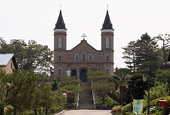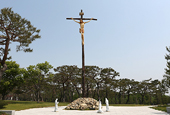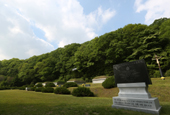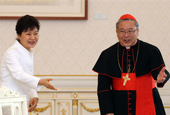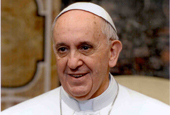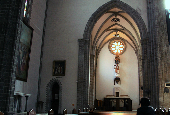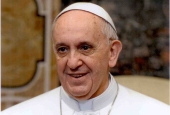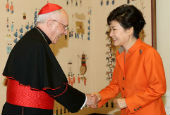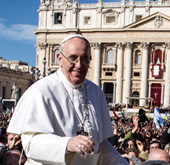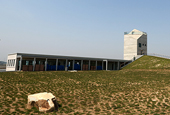-
 Korea.net's 24-hour YouTube channel
Korea.net's 24-hour YouTube channel- NEWS FOCUS
- ABOUT KOREA
- EVENTS
- RESOURCES
- GOVERNMENT
- ABOUT US
The Haemi Martyrdom Holy Ground in Seosan, Chungcheongnam-do (South Chungcheong Province), is a land of thousands of nameless martyrs, most of them commoners and farmers. Catholicism flourished in the area and among the many sacred places of South Chungcheong Province, Haemi, formerly Naepo, was the only location that had an army outpost. It was a strategic military point with a fortress. The Haemi governor had the power to execute people in the name of defending the coast. Catholics who were arrested along the West Coast were persecuted here.
From 1790 to 1880, thousands of Catholic believers were executed as state offenders. Pius Kim Jin-hu, great grandfather of St. Andrew Kim Dae-geon, the first Korean Catholic priest, died as a martyr on October 20, 1814, after serving ten years in prison. According to records of the Catholic Church, there were 67 martyrs in Haemi. According to government records, there were 65. However, there are no records for the thousands of nameless martyrs. Aristocrats were transferred to Gongju, where the Chungcheong governor was based, or to Hongju, while those who were executed in Haemi were commoners, farmers and from the lower classes. Of the great persecutions that took place between 1866 and 1868, the names of only 130 of the more than 1,000 followers are known today.
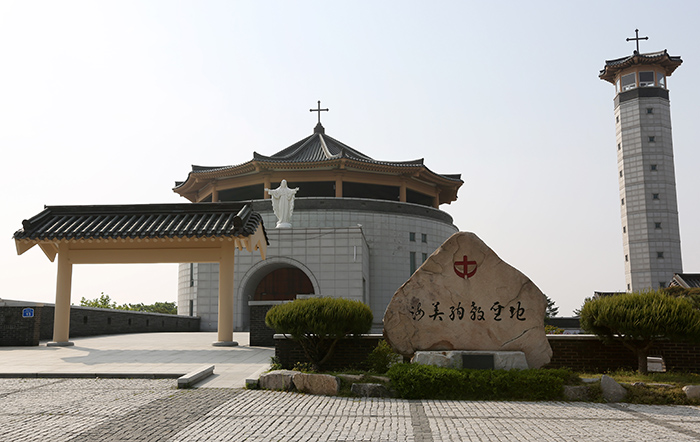
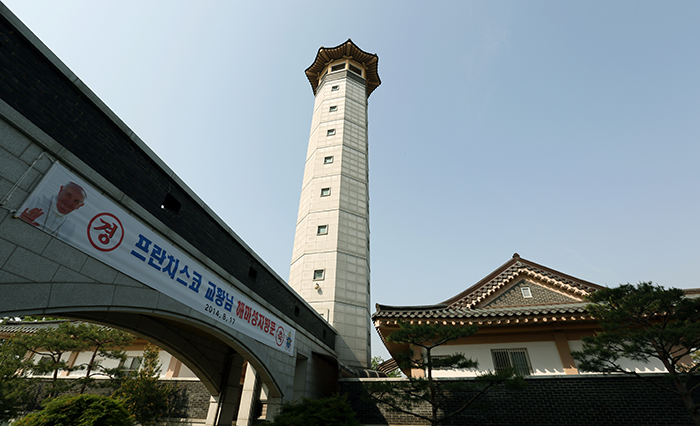
The area just outside the Haemi fortress's west gate was used as an execution ground ever since the 1790s. When the execution ground was overcrowded, Catholic believers, with their hands tied, were pushed into in a pond. The pond is long gone, but the site still remains in the Haemi Martyrdom Holy Ground, the Jindumbeong, a word from the Chungcheong dialect that means "pond."
In Haemi, there is also a thickly wooded area, the Yeosutgol. Followers were dragged to this site as they cried out, "Jesus, Mary," but the villagers misheard it as, "Yeosu, Meori," or, "the head of a fox." So people referred to the site as the Yeosutgol. Many bones have been found here, and there are also the teeth of many children. A memorial in the Haemi complex has the remains on display.
"The Haemi governor had enough authority and strength to execute Catholics without needing any approval from a district office," said Father Paik Sung-soo Simon of the Haemi complex. "There were many martyrs from 1790 to 1868."
"Unlike aristocrats who were transferred to Hongseong, there are no records of the commoners who died as martyrs," he added.
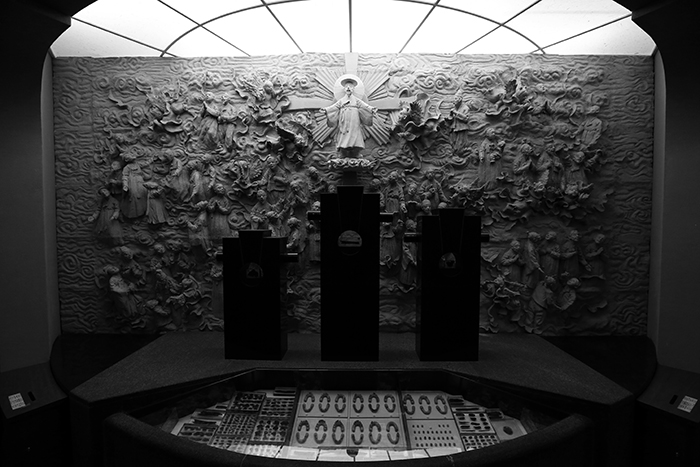
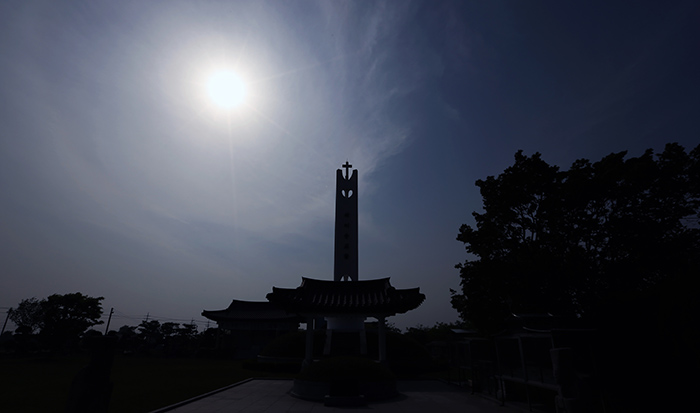
The 1.2-kilometer walk from the Haemi fortress to the Haemi Martyrdom Holy Ground is called the Way of Cross, and these days there is an endless line of pilgrims following the route.
"Like in Jerusalem, there is also a Way of Cross in Haemi. Pilgrims mediate about life and death as they follow the path," said Father Paik.
Pope Francis will visit the Haemi Martyrdom Holy Ground and pay his respects at the tombs of the martyrs before celebrating Mass during the Asia Youth Day festival, to be held in the Haemi fortress on August 17.
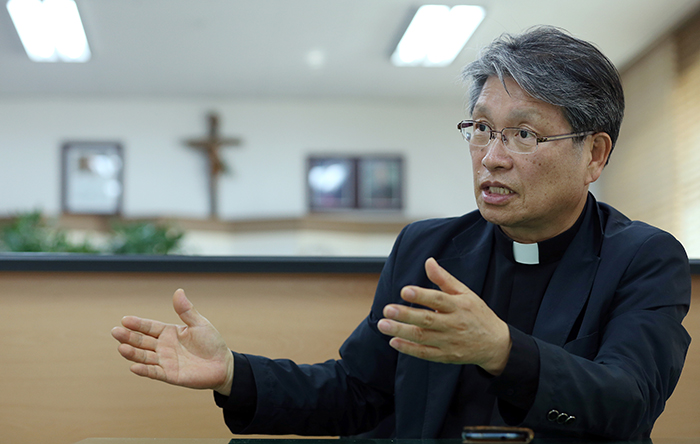
By Limb Jae-un
Korea.net Staff Writer
jun2@korea.kr

From 1790 to 1880, thousands of Catholic believers were executed as state offenders. Pius Kim Jin-hu, great grandfather of St. Andrew Kim Dae-geon, the first Korean Catholic priest, died as a martyr on October 20, 1814, after serving ten years in prison. According to records of the Catholic Church, there were 67 martyrs in Haemi. According to government records, there were 65. However, there are no records for the thousands of nameless martyrs. Aristocrats were transferred to Gongju, where the Chungcheong governor was based, or to Hongju, while those who were executed in Haemi were commoners, farmers and from the lower classes. Of the great persecutions that took place between 1866 and 1868, the names of only 130 of the more than 1,000 followers are known today.


Thousands of nameless Catholic martyrs are buried at the Haemi Martyrdom Holy Ground in Seosan, Chungcheongnam-do (South Chungcheong Province). (photos: Jeon Han)
The area just outside the Haemi fortress's west gate was used as an execution ground ever since the 1790s. When the execution ground was overcrowded, Catholic believers, with their hands tied, were pushed into in a pond. The pond is long gone, but the site still remains in the Haemi Martyrdom Holy Ground, the Jindumbeong, a word from the Chungcheong dialect that means "pond."
In Haemi, there is also a thickly wooded area, the Yeosutgol. Followers were dragged to this site as they cried out, "Jesus, Mary," but the villagers misheard it as, "Yeosu, Meori," or, "the head of a fox." So people referred to the site as the Yeosutgol. Many bones have been found here, and there are also the teeth of many children. A memorial in the Haemi complex has the remains on display.
"The Haemi governor had enough authority and strength to execute Catholics without needing any approval from a district office," said Father Paik Sung-soo Simon of the Haemi complex. "There were many martyrs from 1790 to 1868."
"Unlike aristocrats who were transferred to Hongseong, there are no records of the commoners who died as martyrs," he added.


The remains of the martyrs are on display at the Haemi Martyrdom Holy Ground. (photos: Jeon Han)
The 1.2-kilometer walk from the Haemi fortress to the Haemi Martyrdom Holy Ground is called the Way of Cross, and these days there is an endless line of pilgrims following the route.
"Like in Jerusalem, there is also a Way of Cross in Haemi. Pilgrims mediate about life and death as they follow the path," said Father Paik.
Pope Francis will visit the Haemi Martyrdom Holy Ground and pay his respects at the tombs of the martyrs before celebrating Mass during the Asia Youth Day festival, to be held in the Haemi fortress on August 17.

Father Paik Sung-soo Simon of the Haemi Martyrdom Holy Ground says there were many nameless martyrs because many of them were commoners. (photo: Jeon Han)
By Limb Jae-un
Korea.net Staff Writer
jun2@korea.kr
Related Contents
Most popular
- China warmly welcomes first Korea-born giant panda Fu Bao
- First hearing-impaired K-pop act hopes for 'barrier-free world'
- Novelist Hwang's 'Mater 2-10' shortlisted for Int'l Booker Prize
- Expats could account for 7% of population in 20 years: report
- Nat'l Fire Agency picks 137 elite staff for deployment abroad









